
Cover illustration may show optional equipment not supplied with standard unit.
© Copyright 2000 Printed 7/14/08
Operator’s Manual
!
Read the Operator’smanual entirely. When youseethissymbol,thesubsequentinstruc-
tions and warnings areserious - followwithout exception. Yourlife and the lives of others
depend on it!
Table of Contents
312-382M
RC45180 & RCM45180
Rotary Cutter
14115

Table of Contents
RC45180 & RCM45180 Rotary Cutter 312-382M 7/14/08
Land Pride
Table of Contents
© Copyright 2008 All rights Reserved
Land Pride provides thispublication “asis”without warranty ofany kind, either expressed or implied. Whileevery precaution has been taken inthe preparationof this manual, Land
Pride assumesno responsibility forerrorsor omissions.Neither isanyliabilityassumed fordamages resulting fromtheuse oftheinformation contained herein.LandPride reserves
the rightto reviseand improveits products asit seesfit.This publicationdescribes thestate ofthis product atthe time ofits publication,and maynot reflect theproduct inthefuture.
Land Pride is aregistered trademark.
All other brands and product names are trademarks or registered trademarks of their respective holders.
Printed in the United States of America.
Important Safety Information . . . . . . . . . . .1
Safety Notations . . . . . . . . . . . . . . . . . . . . . . . . . . 1
Safety Rules . . . . . . . . . . . . . . . . . . . . . . . . . . . . .1
General . . . . . . . . . . . . . . . . . . . . . . . . . . . . . . . 2
Transporting . . . . . . . . . . . . . . . . . . . . . . . . . . . 2
Tire Handling & Repair . . . . . . . . . . . . . . . . . . . 2
Safety Labels . . . . . . . . . . . . . . . . . . . . . . . . . . . . . 3
Introduction . . . . . . . . . . . . . . . . . . . . . . . .7
Using This Manual . . . . . . . . . . . . . . . . . . . . . . . . . 7
Terminology: . . . . . . . . . . . . . . . . . . . . . . . . . . . 7
Definitions: . . . . . . . . . . . . . . . . . . . . . . . . . . . . 7
Owner Assistance . . . . . . . . . . . . . . . . . . . . . . . . . 7
Serial Number Plate . . . . . . . . . . . . . . . . . . . . .7
Section 1 Assembly and Setup . . . . . . . . .8
Tractor Requirements . . . . . . . . . . . . . . . . . . . . . . 8
Before You Start . . . . . . . . . . . . . . . . . . . . . . . . . . 8
Dealer Cutter Assembly & Preparations . . . . . . . .8
Left & Right Wing Axle Assembly . . . . . . . . . . . . . . 8
Hitch Assembly . . . . . . . . . . . . . . . . . . . . . . . . . . . 8
Slow Moving Vehicle
Bundle Assembly . . . . . . . . . . . . . . . . . . . . . . . . . . 9
Hydraulic Plumbing . . . . . . . . . . . . . . . . . . . . . . . . 9
Tractor Hookup . . . . . . . . . . . . . . . . . . . . . . . . . . 10
Section 2 Operating Instructions . . . . . .12
Operating Check List . . . . . . . . . . . . . . . . . . . . . . 12
Transporting . . . . . . . . . . . . . . . . . . . . . . . . . . . .13
Parking . . . . . . . . . . . . . . . . . . . . . . . . . . . . . . . . 13
Section 3 Adjustments . . . . . . . . . . . . . . .14
Center Deck Level Adjustments . . . . . . . . . . . . . .14
Center Deck Rear Axle Arms Adjustment . . . . . . 14
Wing Deck Level Adjustments . . . . . . . . . . . . . . . 15
Wing Deck Tailwheel Rubber Bumper Adjustment 15
Section 4 Troubleshooting . . . . . . . . . . .16
Section 5 Maintenance and Lubrication .17
Maintenance . . . . . . . . . . . . . . . . . . . . . . . . . . . .17
Service Cutting Blades . . . . . . . . . . . . . . . . . . . . .17
Skid Shoes . . . . . . . . . . . . . . . . . . . . . . . . . . . . . .17
Clutch Run-In . . . . . . . . . . . . . . . . . . . . . . . . . . . .18
Storage . . . . . . . . . . . . . . . . . . . . . . . . . . . . . . . .18
Lubrication . . . . . . . . . . . . . . . . . . . . . . . . . . . . . .19
Axle Hub Bearing . . . . . . . . . . . . . . . . . . . . . .19
Wing Hinges (6) . . . . . . . . . . . . . . . . . . . . . . . .19
Ratchet Jack . . . . . . . . . . . . . . . . . . . . . . . . . .19
Axle Rockshaft & Axle Link . . . . . . . . . . . . . . .20
Main Hitch . . . . . . . . . . . . . . . . . . . . . . . . . . . .20
Gearbox . . . . . . . . . . . . . . . . . . . . . . . . . . . . .20
Divider Box . . . . . . . . . . . . . . . . . . . . . . . . . . .20
Driveline Shaft . . . . . . . . . . . . . . . . . . . . . . . . .21
Drive line Shafts . . . . . . . . . . . . . . . . . . . . . . .21
PTO Constant Velocity Shaft . . . . . . . . . . . . . .21
4-Plate Slip Clutch . . . . . . . . . . . . . . . . . . . . . . . .22
Disassembly . . . . . . . . . . . . . . . . . . . . . . . . . . . . .22
Assembly . . . . . . . . . . . . . . . . . . . . . . . . . . . . . . .22
Section 6 Specifications and Capacities 23
Section 7 Appendix . . . . . . . . . . . . . . . . .24
Tire Inflation Chart . . . . . . . . . . . . . . . . . . . . . . . .24
Torque Values Chart for Common Bolt Sizes . . . .24
Warranty . . . . . . . . . . . . . . . . . . . . . . . . . . . . . . .25

1
Important Safety Information
7/14/08
RC45180 & RCM45180 Rotary Cutter 312-382M
Land Pride
Table of Contents
Important Safety Information
!
!
CAUTION!
Indicates a potentially hazardous situation which, if not
avoided, may result in minor or moderate injury. It may
also be used to alert against unsafe practices
Safety Rules
Most accidents are the result of negligence and careless-
ness, usually caused by failure of the operator to follow
safety precautions. The following precautions are manda-
tory to prevent such accidents. Your implement has been
designed with built-in safety features.
Make sure everyone that uses this machine has read the
Operator’s Manual and understands how to operate it
safely.
This Operator’s Manual is considered a part of the imple-
ment and should remain so when loaned or sold.
These rules and instructions
must be reviewed at least annually
by all operators!
For your safety and to develop a better understanding of
your equipment, thoroughly read the Operator’s Sections
of this manual before operation.
Safety Notations
The SAFETY ALERT SYMBOL indicates that there is a
potential hazard to personal safety involved and extra
safety precautionsmustbe taken.When you see this sym-
bol,bealertandcarefullyreadthemessagethatfollows it.
In addition to design and configuration of equipment; haz-
ard control and accident prevention are dependent upon
the awareness, concern, prudence and proper training of
personnel involved in the operation, transport, mainte-
nance and storage of equipment.
Watch for the following Safety Notations throughout
your Operator’s Manual:
!
DANGER!
Indicates an imminently hazardous situation which, if not
avoided, will result in death or serious injury. This signal
word is limited to the most extreme situations.
!
WARNING!
Indicates a potentially hazardous situation which, if not
avoided, could result in death or serious injury.
!

2
Important Safety Information
RC45180 & RCM45180 Rotary Cutter 312-382M 7/14/08
Land Pride
Table of Contents
General
1. Do not allow anyone to operate this machine who has not
been properly trained in its safe operation.
2. To prevent personal injury caused by thrown objects, the
use of front and rear safety shields is strongly recommend-
ed.
3. Do not let children operate the cutter.
4. Never allow passengers.
5. Neveroperate thecutter nearpeople and donot stand near
the cutter while blades are in motion.
6. Before cutting, clear the area of objects and debris that
could become entangled in the blades or thrown from the
cutter.
7. After striking an object, disengage PTO, shut off tractor
and inspect for damage before continuing.
8. Do not operate the cutter in reverse unless necessary. De-
bris may be thrown from the front of the cutter; therefore,
increasing the risk of injury to the operator.
9. Check the cutter periodically for loose hardware and tight-
en if necessary.
10. Travel slowly over rough terrain and be alert to holes and
gullies.
11. When traveling on public roads, use accessory lights and
devices for adequate warning to operators of other vehi-
cles. Comply with all Federal, State, and Local laws.
12. Never operate the cutter while in the raised transport posi-
tion.
13. Be alert to traffic when crossing or cutting near roadways.
14. Disengage the PTO when raised for transport or backing
up.
15. Wear proper eye protection to prevent injury from flying
objects.
16. Keep PTO shielding in place and in good condition. do not
operate cutter with shields missing.
17. Always use proper PTO speed or machine damage may re-
sult. This cutter is designed to be used with a tractor using
a 540 or 1,000 rpm rear PTO. Important: Never should
a machine equipped for 540 rpm PTO be operated by a
tractor equipped with a 1,000 rpm PTO nor should a 1,000
rpm PTO machine be operated with a tractor equipped
with a 540 rpm PTO.
18. In order to maintain steering control, add ballast to trac-
tor. To determine the amount of ballast required refer to
your tractor operator’s manual.
19. Before performing maintenance, disconnect PTO driveline
and hydraulic hoses and securely block cutter on safe sup-
porting stands. Do notposition stands under axle or wheel
supports.
20. Transport cutter with transport axle lock pin installed and
wing lock latches in place.
21. Escaping hydraulic fluid under pressure can have suffi-
cient force to penetrate the skin. Check all hydraulic hoses
before applying pressure. Fluid escaping from a very
small hole can be almost invisible. Use paper or card-
board, not body parts, to check for suspected leaks. If in-
jured, seek medical assistance from a doctor that is
familiar with this type of injury. Foreign fluids in the tissue
mustbe surgically removedwithin a fewhours or gangrene
will result.
22. Do not permit anyone to stand between tractor and cutter
- especially during tractor hook-up.
23. Purge air from hydraulic system before attempting to raise
or lower wings.
24. Stand clear of wings when raising or lowering.
Transporting
1. Be alert to traffic when crossing or operating near road-
ways. Always maintain complete control of the machine.
Know your state and local laws concerning highway safety
and regulations. Comply with these laws when transporting
machinery.
2. Do not exceed 15 mph when trasnporting. Transport only
with a farm tractor of sufficient size and horse power. See
“Tractor Requirements” Section 1, PAGE 8.
3. Always make sure flashing safety lights, slow moving vehi-
cle emblem, and reflectors are in place and visible prior to
transporting the machine on public roads, when required.
4. Do not transport at night or during other periods of poor
visibility.
Tire Handling & Repair
1. Tire changing can be dangerous and should be preformed
by trained personnel using the correct tools and equip-
ment.
2. Do not re-inflate a tire that has been run flat or seriously
under inflated. Have it checked by qualified personnel.
3. When removing and installing wheels, use wheel handling
equipment adequate for the weight involved.

3
Important Safety Information
7/14/08
RC45180 & RCM45180 Rotary Cutter 312-382M
Land Pride
Table of Contents
Safety Labels
1. Your implement comes equipped with all safety labels in
place. They were designed to help you safely operate your
implement. Read and follow their directions.
2. Keep all safety labels clean and legible.
3. Replace all damaged or missing labels. To order new labels
go to your Land Pride Dealer.
4. Refer to this section for proper label placement.
To install new labels:
a. Clean the area the label is to be placed
b. Peel backing from label. Press firmly on surface
being careful not to cause air bubbles under label.
818-552C
Danger! Rotating Driveline Entanglement Hazard
818-130C
Caution! Use
540 rpm PTO
only
818-540C
Danger!ShieldMissing
- DO NOT Operate
ROTATING DRIVELINE
KEEP AWAY!
14086
13313
13313
818-240C
Caution! Use
1000 rpm PTO
only

7
Introduction
7/14/08
RC45180 & RCM45180 Rotary Cutter 312-382M
Land Pride
Table of Contents
Introduction
Serial Number Plate
Refer to the followingillustration forthe location ofyourse-
rial number plate.
Forpromptservicealwaysusetheserialnumberandmodel
number when ordering parts from your Land Pride Dealer.
Be sure to include your serial and model numbers in corre-
spondence also.
Your dealer wants you to be satisfied with your new ma-
chine. If for any reason you are not satisfied with the ser-
vice received, the following actions are suggested:
1. Discuss the matter with your dealership Service Man-
ager makesure he is aware ofany problems you may
have and that he has had the opportunity to assist
you.
2. If you are still not satisfied, seek out the Owner or
General Manager of the dealership, explain the prob-
lem and request assistance.
3. For further assistance write to:
Customer Service
Great Plains Mfg. Inc.
P.O. Box 245
Assaria, Ks. 67416
Serial Number Plate Location
Figure 1
14183
Using This Manual
ThisOperator’s Section is designedto help familiarizeyou
with safety, assembly, operation, adjustments, trouble-
shooting, and maintenance. Read this manual and follow
the recommendations to help ensure safe and efficient
operation.
The warranty sheet should be filled out by the owner and
dealer at the time of purchase. After completion give the
dealer the white copy and send the pink copy to Great
Plains. Keep your copy in the manual for use when corre-
sponding with the dealer.
To order a new Operator or Parts Manual contact your au-
thorized dealer or write to the address listed below in the
"Owner Assistance" paragraph. Include themodel andse-
rial numbers of your unit.
The information contained within this manual was current
at the time of printing. Some parts may change slightly to
assure you of the best performance.
Terminology:
"Right " or "Left" as used in this manual is determined by
facing the direction the machine will travel while in useun-
less otherwise stated.
Definitions:
IMPORTANT: Information, related to it’s proceeding topic,
that the author feels would be of use.
Owner Assistance
If customer service or repair parts are required contact
your local Land Pride Dealer. He has trained personnel,
repair parts, and the equipment needed to service your
implement.
These parts have been specially designed and should
only be replaced with genuine Land Pride parts.
NOTE: A special point of information related to it’s
preceding topic. The author’s intention is that you
read and note this information before continuing.

8
Section 1 Assembly and Setup
RC45180 & RCM45180 Rotary Cutter 312-382M 7/14/08
Land Pride
Table of Contents
Section 1 Assembly and Setup
Tractor Requirements
This cutter is designed for tractors with a minimum PTO
horsepower rating of 50 HP and maximum of 150 HP.
!
CAUTION!
Do not over speed PTO or machine damage may result. This
cutter is designed to be used with a tractor using a 540 or
1,000 rpm rear PTO but not both.
Specifically, each cutter is equipped for only one mode of
operation. Do not attempt to operate a 540 PTO cutter
with a 1,000 RPM PTO tractor. Do not operate a 1000
RPM PTO cutter with a 540 PTO tractor. Note that many
tractors provide both 540 and 1,000 RPM PTO modes.
Check your tractors manual to determine your exact con-
figuration.
Before You Start
Readandunderstandtheownersmanualforyourcutter.A
basic understanding of how it works will aid in the assem-
bly and setup of your cutter.
Before attempting to assemblethecutterusethefollowing
asachecklist.Havingall theneededpartsandequipment
readily at hand will speed up your assembly task and will
make the job as safe as possible.
❑Checkforfastenersandpinsthat wereshippedwith the
cutter. Note: All hardware coming from the factory has
beeninstalledin the location whereitwillbe used. If a part
or fastener is temporarily removed for assembly reasons,
remember where it goes. Keep the parts separated.
❑If a pin, bolt or other part has been removed, and you
are unsure where it is used, use the parts section to iden-
tifyit.Be sure the partgetsusedin the correct location.By
double checking while you assemble, you will decrease
the chance of using a bolt incorrectly that may be needed
later.
❑Have a fork lift or loader along with chains and safety
stands that are sized for the job ready for the assembly
task.
❑Have a minimum of 2 people at hand while assembling
the cutter.
❑Check to see all nuts are tightened. See “Torque Val-
ues Chart” page 24 for additional torque specifications.
Dealer Cutter
Assembly & Preparations
This cutter has been partially assembled at the factory.
The hitch & both wing axles will need to be assembled.
Left & Right Wing Axle Assembly
Refer to Figure 1-1:
1. Assemble axle tube arm assembly (#1) with tire to
wing axle (#2), using axle mount pin (#3) with hard-
ware. Install rubber bumpers (#4) with hardware.
2. Grease points marked by arrows as noted in "Main
tenance & Lubrication" section page 19.
Hitch Assembly
Refer to Figure 1-2:
1. Insert main hitch rear mount bushings (#2) into hitch
pivot. Install the main hitch (#1) to the forward hitch
plates. Secure with 1" x 8" hex bolt (#3) and 1" flat
washers and Nylock nut. Nut should be located to-
ward the inside as shown.
2. Install both leveling rods (#4) through the respective
trunnion pivot of the hitch. Secure the leveling rod to
the hitch with the leveling tube weldment (#6) and a 7/
8" hex nut (#8). Note: The leveling tube weldment
should be screwed onto the leveling rod about 3" as a
preliminary adjustment. Final adjustment should not
be made until the cutter is attached to the tractor.
NOTE: Hardware bag should be banded to unit.
NOTE: Make sure nuts & bolts are tight.
Wing Axle Assembly
Figure 1-1
13869
NOTE: Do not tighten hardware until assembly is
complete.

9
Section 1 Assembly and Setup
7/14/08
RC45180 & RCM45180 Rotary Cutter 312-382M
Land Pride
Table of Contents
3. Install screw jack (#7) to hitch and secure with at-
tached pin. Adjust jack until center deck is approxi-
mately horizontal.
Slow Moving Vehicle
Bundle Assembly
Refer to Figure 1-3:
Install bracket (#1) with hardware shown to bearing cap.
Then install Slow Moving Vehicle (#2) to bracket (#1) by
using screw1/4" x5/8" Long (#3) with square nut (#5) and
lock washer (#4).
Hydraulic Plumbing
Refer to Figure 1-4:
The standard cutter is equipped with hydraulic cylinders
for each wing to provide simultaneous folding.
An optional hydraulic lift adjustment kit is also available
from your Dealer.
11153
Hitch Assembly Illustration
Figure 1-2
Slow Moving Vehicle Assembly
Figure 1-3
13895
Hydraulic Plumbing
Figure 1-4
14102

10
Section 1 Assembly and Setup
RC45180 & RCM45180 Rotary Cutter 312-382M 7/14/08
Land Pride
Table of Contents
Your Dealer will be able to help you determine the best
configuration to match your tractor.
Tractor Hookup
Refer to Figure 1-5:
1. Back the tractor up to the tongue until holes in draw-
barandcutterhitcharealigned.Raiseorlowertongue
jack to correct height.
2. Attachcutterwith1"hitchpinandsecurewithlockpin.
Alwaysuse apinthatcontains asafetylockingdevice
to prevent it from falling out.
3. Lower tongue jack until weight of cutter is fully re-
movedfrom jack, then removethejack. Store thejack
on the left hand wing deck. A storage base is located
near the front edge of the wing.
4. Attach safety chain on tongue hitch to tractor. Adjust
chain length to remove all slack except what is neces-
sarytopermitturningofthecutter.Lockhooksecurely
on chain.
Refer to Figure 1-6:
5. The PTO shaft from the tractor may be a constant ve-
locitytypeorconventional.Attachthe13/4-20splined
end to the input side of the power divider gearbox. At-
tach end with the quick disconnect to the tractor.
NOTE: Each pair of outlets on your tractor can only
operate one remote cylinder. All three cylinders on
the cutter are single action (one-way) type cylinders
and should not be plumbed for two-way operation.
6. Secure chain on PTO around cutter tongue to restrict
outer shield of PTO from rotating.
7. PTO should now be moved back and forth to insure
that it is secured on theshaft of the tractor and power
divider input shaft on the cutter.
8. Should the PTO shaft require shortening:
a. Holdthehalfshafts nextto each other intheshort-
est working position and mark them.
PTO Quick Disconnect
Figure 1-6
11150
NOTE: The PTO quick disconnect consists of a
graphite reinforced, round sleeve that must be rotat-
ed about it's ownaxis to engage/disengage the shaft.
NOTE: Two small chains are supplied with each
PTO. These chains must be attached to the outer
shields of each PTO shield and to an anchor ring on
the cutter deck or hitch
Tractor Hook-Up
Figure 1-5
14103

11
Section 1 Assembly and Setup
7/14/08
RC45180 & RCM45180 Rotary Cutter 312-382M
Land Pride
Table of Contents
b. Shorten inner and outer guard tubes equally.
c. Shorten inner and outer sliding profiles by the
same length as the guard tubes.
d. Proper overlap is a minimum of one-half the
lengthofeachtube,withbothtubesbeingofequal
length.
e. Round off all sharp edges and remove burrs.
Grease sliding profiles.
9. Route cylinder hoses through hose support loop and
connecttotractorremoteoutlets.Referto"Hydraulic
Plumbing" on page 9for proper hookup.Ifthe tractor
being used does not have three pair ofsupply outlets,
an optional control valve kit is available from your
dealer.
10. Cyclethehydraulicsystembyraisingandloweringthe
center deck cylinder and the wing fold cylinders.If op-
eration is sluggish, it may be necessary to purge the
system of trapped air.
!
DANGER!
Hydraulic fluid under pressure can penetrate skin. Wear protec-
tive gloves and safety glasses or goggles when working with hy-
draulic systems. Use a piece of cardboard or wood rather than
hands when searching for hydraulic leaks. If hydraulic fluid is
injected into the skin, it must be surgicallyremoved within a few
hours by a doctor or gangrene may result.
a. With the wings lowered to the ground, loosen the
hydraulichosefittingateachwingcylinderslightly
to allow fluid to escape.
b. Slowly activate the tractor control valve to purge
any trapped air from the system.
c. Tighten each fitting.
Theoptionalcenterdecklift cylinder is purgedin thesame
manner.Thecuttershould be loweredtothegroundor the
cylinderfullyretractedbeforelooseningthehosefitting(as
described above).
11. ThePTOConstantVelocityshaftorconventionalPTO
(if used) should be checked for adequate clearance
under all ranges of cutter height depending on the
tractorbeingused.WiththePTOshaftattachedtothe
tractor, slowly raise and lower the cutter to upper and
lower limits while observing clearance distance be-
tween hitch and PTO shaft. If an interference condi-
tionexists, itmay be necessaryto modify the drawbar
height/length of the tractor.

12
Section 2 Operating Instructions
RC45180 & RCM45180 Rotary Cutter 312-382M 7/14/08
Land Pride
Table of Contents
Section 2 Operating Instructions
Operating Check List
In addition to design and configuration of equipment; haz-
ard control and accident prevention are dependent upon
the awareness, concern, prudence and proper training in-
volved in its operation, transport, maintenance and stor-
age of equipment. Before beginning to operate your
Cutter, the following inspection should be performed.
!
WARNING!
The following operating procedures should be carried out by
the tractor operator. Other persons should be cleared of the
area even during cutter setup. cutter operation should be
stopped when in the vicinity of other persons.
Refer to Figure 2-1:
1. Raisethecenterdecktosufficientheighttodisengage
the transport link (#1) . Remove the transport link pin
(#2),lowerthelinkarm,thenreplacethelinkpintothe
storage position.
2. Inspect the wing blade carriers and blades prior to
lowering the wings. The wing deck blades may be-
come locked together (overlapped) when the wings
are raised to transport position. Operating the cutter
undersuchcircumstances will resultinseveredeckvi-
bration.Inspectthewingdecksfor a locked blade con-
dition prior to power-on operation. Use a pry bar or
other tool to separate the blades if necessary.
3. The automatic wing latches on each wing must be re-
leased prior to lowering the wings. If the wing latch
handles cannot be moved, it may be necessary to
raise the wings to the fully closed position. Release
wing latch and then lower the wings to full-down posi-
tion.
Check Reference
Read and follow the “Safety Rules” care-
fully.
Section 1
page 1
Read all of the "Tractor Hook Up" and prep-
aration instructions.
Section 1
page 10
“Operating Instructions” in this Manual Section 2
page 12
Lubricate the cutter as needed. Refer to
"Lubrication"
Section 5
page 19
Check the cutter initially and periodically for
loose bolts & pins, "Torque Values Chart".
Section 6
page 24
Make sure all guards and shields are in
place.
Section 1
page 3
Gearbox Gear Lube Section 5
page 20
NOTE: The center deck height is controlled with the
standard ratchet jack or the optional hydraulic lift cyl-
inder.
4. Increase throttle to approximately 500 RPM and slow-
ly engage PTO. Ensure that all power shafts are rotat-
ing and that cutter has no vibration.
5. Continue to increase throttle to full PTO speed before
commencing forward operation.
Refer to Figure 2-2:
Optimum Ground speed depends on the density of the
material being cut, the horsepower rating of the tractor,
and (in some cases) terrain.
If the cutter-to-tractor PTO is a standard conventional
shaft,avoidtractor-to-cutterturninganglesexceeding35˚.
If equipped with a Constant Velocity PTO shaft, the turn-
ing angle may be increased to 80˚. These extreme angles
are intended for intermittent usage only and not prolong
usage. Plan your field cutting to minimize the number of
turns as well as the extreme angles where turns are
necessary.
Transport Link
Figure 2-1
13885
Conventional U-Joint PTO
Figure 2-2
11934

13
Section 2 Operating Instructions
7/14/08
RC45180 & RCM45180 Rotary Cutter 312-382M
Land Pride
Table of Contents
This cutter was designed to cut grass and medium to
heavy brush in pastures, right-of-ways, and certain ditch/
terraceareas. Thiscutterisalso usefulforheavyrowcrop
cutting. Avoid areaswhere small trees or brush diameters
exceed 2". Do not attempt to operate this cutter in areas
where rocks, steel, glass, concrete, wire, or other hard,
foreign objects may be present.
!
WARNING!
Do not operate this cutter under any terrain conditions where
the wing angle exceeds 45˚ up. Ensure that the wing wheels are
in continuous ground contact at all times. Use the float position
of your tractors hydraulic system to provide automatic wing
float position for varying terrain conditions.
Transporting
!
DANGER!
Rotary Cutters have the ability to discharge objects at high
speeds; do not operate this cutter along highways, roadways or
other areas where people may be present unless approved
guarding has been installed and properly maintained. Factory
approved guarding includes front and rear safety chain, deflec-
tor skirts or other shields. Contact your dealer or call Great
Plains Manufacturing, Inc. for the name of your nearest factory
authorized dealer.
!
CAUTION!
When traveling on public roads whether at night or during the
day, use accessory light and devices for adequate warning to
operators of other vehicles. Comply with all federal, state and
local laws.
!
CAUTION!
Always disengage tractor PTO before transporting cutter to
avoid injury from thrown objects or blade contact.
1. Select a safe ground travel speed when transporting
from one area to another. When traveling on road-
ways, transport in such a way that fastermoving vehi-
cles may pass you safely.
2. Reduce tractor ground speed when turning. Leave
enough clearance so the cutter does not contact ob-
stacles such as buildings, trees or fences.
3. When traveling over rough or hilly terrain, shift tractor
to a lower gear.
4. Raise cutter to transport position using the hydraulic
lift or rachet jack. Careful: When raising to transport
position, be certain that PTO shaft does not contact
tractor or cutter tongue.
5. Raise both wings to 85˚ vertical position. The auto-
matic wing latches should engage. Check to be sure
they are fully latched.
Refer to Figure 2-3:
6. Engage transport lock (#1) by removing lock pin (#2)
and rotating transport lock to 45˚ position. Insert lock
pin through detent notch and secure with hair pin cot-
ter (#3).
7. Slowly lower the cutter until transport lug of axle weld-
ment contacts transport lock block.
8. Reduce tractor ground speed when turning; be sure
tractor wheel does not contact cutter when turning.
Leave clearance so cutter does not contact obstacles
such as buildings, trees or fences.
9. The cutter should be transported no faster than 15
mph when equipped with laminated or solid tires,
and 30 mph when equipped with pneumatic tires.
!
CAUTION!
The cutter is 8’ 9" wide and care should be taken when encoun-
tering oncoming traffic and roadside obstructions.
Parking
The following steps should be done when preparing to
store the cutter or unhitch it from the tractor. See also
“Storage”, on page 18 for additional information on long
term storage of your cutter.
1. Park the cutter on a level, solid area.
2. Shut off tractor engine and engage parking brake.
3. Installjack & crankup the jackuntilit is supportingthe
unit.
4. Unhitch from tractor.
Transport Link Operation
Figure 2-3
13885

14
Section 3 Adjustments
RC45180 & RCM45180 Rotary Cutter 312-382M 7/14/08
Land Pride
Table of Contents
Section 3 Adjustments
Center Deck Level Adjustments
These adjustments should be made with the cutter
hookedup to thesame tractorthat will be used for field op-
erations or one having the same drawbar height.
!
CAUTION!
Engage parking brake, shut off tractor, remove key and disen-
gage PTO before making any height adjustments!
Center Deck Rear Axle
Arms Bolt & Nut Adjustment
Refer to Figure 3-1:
1. Tightenallfourbolts (#1) untilthenuts(#2) bottom out
on the bolts (this is to loosen springs up) then loosen
all 4-bolts until all the nuts are loose.
2. Measure the distance "A" on both center axle arm
tubes to axle channel.
3. On the side with the shortest "A" Measurement, tight-
en nuts up until they are just snug against the axle
tube!
4. Adjust the other axle assembly (with the longest "A"
measurement),bytighteningthenuts(#2),untilit’s"A"
measurement is the same as the previous axle as-
sembly (with the shortest "A" measurement).
Refer to Figure 3-2:
Withthecutterpositionedonlevelground,thedeckshould
beadjustedtoalevelpositionforthe drawbarheight of the
tractor being used.
1. Raisebothwingstolatchedposition.Adjusttheheight
of the center deck to 2-3 inch clearance between the
front skids and ground surface.
2. Place a level anywhere on a center deck channel. It
should be oriented for front-to-rear readings.
3. Loosen hex nut(#1) on level rod andturn the leveling
tube weldment (#2) clockwise to raise the front of the
NOTE: Cutter is to be set upon level ground with the
wings folded up and in the locked position.
13134
Center Deck Rear Axle
Figure 3-1
14104
Center Deck Level Adjustments
Figure 3-2

15
Section 3 Adjustments
7/14/08
RC45180 & RCM45180 Rotary Cutter 312-382M
Land Pride
Table of Contents
cutterorcounterclockwisetolower.Continuetoadjust
untilthedeckislevel orthefrontisslightlybelowlevel.
Both leveling rods should be adjusted to equal
lengths.
4. Tighten jam nut (#1) to secure leveling rods.
5. This setting should not require further adjustment un-
less the drawbar height is changed or different size
tires are used.
6. The cutting height can be adjusted by extending or re-
tracting the hydraulic cylinder or rachet jack located
at the rear center of the cutter.
Wing Deck Level Adjustments
IMPORTANT:EnsurethatCenterDeckLevelAdjustments
have been made before proceeding with wing deck level
adjustments.
!
CAUTION!
Engage parking brake, shut off tractor, remove key and disen-
gage PTO before making any height adjustments!
Refer to Figure 3-3:
1. Lower both wings to full down position.
2. Place a level on the wing axle rockshaft to determine
initial up or down position (left/right).
3. Raise the wing to full vertical position.
4. Remove the cotter pin (#1) and clevis pin (#2), from
the back end of the axle link (#3). The axle link is then
shortenedto raise the wingorlengthened to lower the
wing. Shorten the axle link by rotating the clevis end
clockwise or lengthen by turning counterclockwise.
Reattach to the rockshaft lug.
Wing Deck Level Adjustments
Figure 3-3
13887
5. Repeatsteps1through4untilaxlerockshaftisatlevel
position.
6. Reattachclevis torockshaftlugand securewithclevis
pin and cotter pin.
Wing Deck Tailwheel
Rubber Bumper Adjustment
Refer to Figure 3-4:
Thetailwheeladjustmentnut, Figure 3-4, is tobeadjusted
withwingsdownandinlevelposition.(Weightofcutterwill
set the rubber bumpers). Snug nut up, plus one additional
turn. Bumpers are then set for optimal cushioning
condition!
NOTE: Cutter to be adjusted on level ground
NOTE: Bumpers will need to be checked periodically
for over-compression. When dimension "A" gets to
1", the cushions should both be replaced. Bumper
part number is 312-313D
Wing Deck Tail Bumper
Figure 3-4
13153

16
Section 4 Troubleshooting
RC45180 & RCM45180 Rotary Cutter 312-382M 7/14/08
Land Pride
Table of Contents
Section 4 Troubleshooting
Problem Solution
Oil seal leaking
Drain to level fill hole
Replace seals
Clean off wrapped material and check seal areas daily
Power Take Off yoke
or shock cross failing
Avoid hitting solid objects
Lubricate every 10 hours
Slip Clutches slip even with a light load
Replace clutch plates
Remove foreign object
Bent Power Take Off shaft {Note: Power
Take Off shaft should be repaired or
replaced if bent}
Reduce lift height in transport position
Reposition drawbar
Shorten Power Take Off shaft
Power Take Off shaft
telescoping tube failing
Avoid hitting solid objects
Power Take Off shaft
telescoping tube wearing
Lubricate every 50 hours of operation
Blades wearing excessively
Raise cutting height
Blades coming loose
Tighten blade hardware {refer to “Service Cutting Blades” on page 17}
Blades breaking
Avoid solid objects
Loose blade carrier
Replace gearbox bearings and / or shaft
Tighten shaft nut to specified torque
Blade carrier bent
Avoid hitting solid objects
Excessive side skid wear
Adjust cutter height
Raise cutting height
Excessive vibration
Replace Power Take Off or distribution shaft
Replace blade carrier
Replace blade
Inspect and unlock blades
Disassemble and inspect for incorrectly located needles or damaged bearing cap
Replace each pair of blades on affected carrier
Wing cylinder movement too slow
Remove elbow fitting and remove orifice

17
Section 5 Maintenance and Lubrication
7/14/08
RC45180 & RCM45180 Rotary Cutter 312-382M
Land Pride
Table of Contents
Section 5 Maintenance and Lubrication
Maintenance
Proper servicing and adjustment is the key to the long life
of any farm implement. With careful and systematic in-
spection, you can avoid costly maintenance, time and re-
pair.
For safety reasons, each maintenance operation must be
performed wiht tractor PTO disengaged, the cutter low-
ered completely to the ground or on safely supported
blocking, tractor engine shut off and ignition key removed.
1. After using your cutter for several hours, check all
bolts to be sure they are tight.
2. After transporting your cutter for several hours, check
all wheel lugs, bolts and nutsto be sure they are tight.
Always maintain proper air pressure in the tires.
Service Cutting Blades
1. Both blades on each dishpan should be sharpened at
the same angle as the original cutting edge and must
be replaced or reground at the same time to maintain
proper balance in the cutting unit.
IMPORTANT: Replace blades with genuine Land Pride
blades only. If one blade is to be replaced, the mating
blade {on the same carrier} must also be replaced.
2. Bothblades on eachdishpan shouldweighthe sameaf-
ter sharpening.
3. When replacing or sharpening the cutter blades, exam-
ineboltsandhardwareforexcessivewearandreplaceif
necessary.
a. Torque blade bolt lock nut to 450 ft. pounds. An ex-
tended cheater bar may be required to achieve
proper torque.
b. Carefullycheckthecuttingedgesofthe bladesinre-
lation to the blade carrier rotation diagram below to
ensure correct blade placement.
!
CAUTION!
Installation of the longer blades on the wing deckswill cause an
immediate operating hazard.
NOTE: Check tightness of bolts periodically, using
the “Torque Values Chart” on 24 as a guide.
NOTE: Do not remove any more material than nec-
essary when sharpening blades.
4. Blade Dishpan Replacement:
Dishpan nut on gearbox output shafts should be torqued
to 450 foot/pounds and cotter pin installed in nut with legs
securely bent around nut.
Skid Shoe Service & Replacement
The center deck skid shoes should be checkedperiodical-
ly for wear and replaced is necessary. Order center deck
skid shoe Land Pride part #312-218H. No adjustment is
required.
!
CAUTION!
Skid shoe replacement must be done with the deck raised to the
transport position and securely blocked. Engage parking brake,
shut off tractor, remove key and disengage PTO before adjusting
or replacing these parts.
!
WARNING!
Excessive wear on skids may cause inadequate operationof cut-
ter and create a safety hazard!
The wing deck skid shoes should be checked periodically
for wear. Excessiveleading edge wear can be repairedby
interchanging the LH wing skid with the RH wing skid. If
bothleadingedgeshavebeenworndown,orderskidshoe
Land Pride part # 312-446H.
Skid Shoes
To replace center deck skid shoes:
Refer to Figure 5-2:
a. Attach skid shoe to cutter, using four 1/2" bolts
lock washers and hex nuts.
b. Repeat for opposite skid shoe.
NOTE: Blades for the wings & center deck are 25"
long, Note rotation as shown in Figure 5-1.
818-268C
Blade Rotation
Figure 5-1

18
Section 5 Maintenance and Lubrication
RC45180 & RCM45180 Rotary Cutter 312-382M 7/14/08
Land Pride
Table of Contents
1. Tighten all 4 nuts uniformly until the spring load is low
enough that the clutch slips freely with the PTO en-
gaged.
2. Turn nuts fully back. Clutch is ready for use.
Storage
1. At the end of the working season or when the cutter
will not be used for a long period, it is good practiceto
clean off any dirt or grease that may have accumulat-
edonthecutterandanyofthemovingparts. Itmaybe
necessary to scrape off compacted dirt from the bot-
tomofthe deck,thenusea garden hose tothoroughly
clean the surface.
2. Check the blades for wear and replace if necessary.
See "Maintenance & Lubrication".
3. Inspect the cutter for loose, damaged or worn parts
and adjust or replace if needed.
4. Lubricate as noted in "Maintenance & Lubrication"
beginning on page 19.
5. Repaint parts where paint is worn or scratched to pre-
vent rust. Aerosol Buckskin touch-up paint is avail-
able from your dealer. Order Land Pride part #821-
011C.
6. Replace all damaged or missing decals.
7. Store the cutter inside if possible. Inside storage will
reduce maintenance and make for a longer cutter life.
To replace wing deck shoes:
Refer to Figure 5-3:
a. Attach skid shoe to cutter, using three 1/2" car-
riage bolts flat washers, lock washers and hex
nuts.
b. Repeat for opposite skid shoe.
Clutch Run-In
Refer to Figure 5-4:
The clutch should slip during operation to protect the cut-
ter from excessive loads.
Prior toinitial operation and afterlong periodsof inactivity,
the Friction Clutch should be "run-in".
Clutch Run-In
Figure 5-4
10103
14178
Wing Deck Skid Shoe
Figure 5-3
14177
Center Deck Skid Shoe
Figure 5-2
Page is loading ...
Page is loading ...
Page is loading ...
Page is loading ...
Page is loading ...
Page is loading ...
Page is loading ...
Page is loading ...
-
 1
1
-
 2
2
-
 3
3
-
 4
4
-
 5
5
-
 6
6
-
 7
7
-
 8
8
-
 9
9
-
 10
10
-
 11
11
-
 12
12
-
 13
13
-
 14
14
-
 15
15
-
 16
16
-
 17
17
-
 18
18
-
 19
19
-
 20
20
-
 21
21
-
 22
22
-
 23
23
-
 24
24
-
 25
25
-
 26
26
-
 27
27
-
 28
28
Land Pride RCM45180 User manual
- Category
- Utility Vehicle
- Type
- User manual
Ask a question and I''ll find the answer in the document
Finding information in a document is now easier with AI
Related papers
-
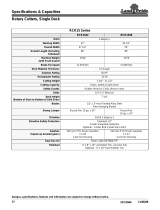 Land Pride RCR15 Series User manual
Land Pride RCR15 Series User manual
-
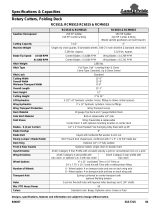 Land Pride Brush Cutter RC5515 User manual
Land Pride Brush Cutter RC5515 User manual
-
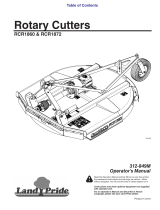 Land Pride RCR18 User manual
Land Pride RCR18 User manual
-
 Land Pride RC5510 User manual
Land Pride RC5510 User manual
-
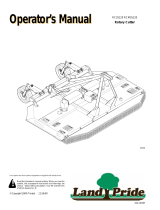 Land Pride RC35120 RCM35120 User manual
Land Pride RC35120 RCM35120 User manual
-
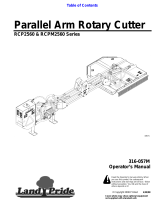 Land Pride Brush Cutter Parallel Arm Rotary Cutter User manual
Land Pride Brush Cutter Parallel Arm Rotary Cutter User manual
-
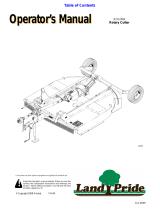 Land Pride RCR2584 User manual
Land Pride RCR2584 User manual
-
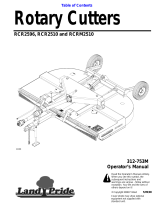 Land Pride RCR2510 User manual
Land Pride RCR2510 User manual
-
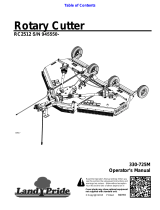 Land Pride RC2512 User manual
Land Pride RC2512 User manual
-
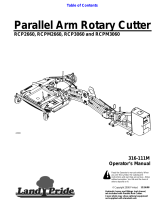 Land Pride RCP3060 User manual
Land Pride RCP3060 User manual
Other documents
-
Snapper 1600211 User manual
-
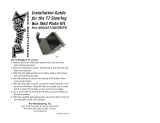 Teraflex 4627400 Installation guide
Teraflex 4627400 Installation guide
-
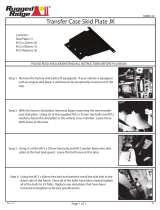 Rugged Ridge 18003.32 Installation guide
Rugged Ridge 18003.32 Installation guide
-
Carr 167301 Installation guide
-
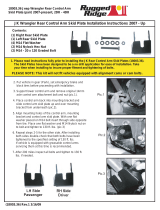 Rugged Ridge 18003.36 Installation guide
Rugged Ridge 18003.36 Installation guide
-
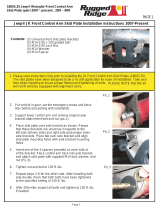 Rugged Ridge 18003.35 Installation guide
Rugged Ridge 18003.35 Installation guide
-
 Rugged Ridge 18003.12 Installation guide
Rugged Ridge 18003.12 Installation guide
-
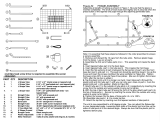 Franklin Sports 5670 Operating instructions
Franklin Sports 5670 Operating instructions
-
Premier AC720 User manual
-
GREAT PLAINS PL5905 60-Foot 3-Section Planter Operating instructions














































